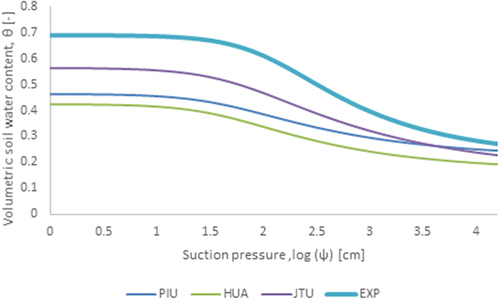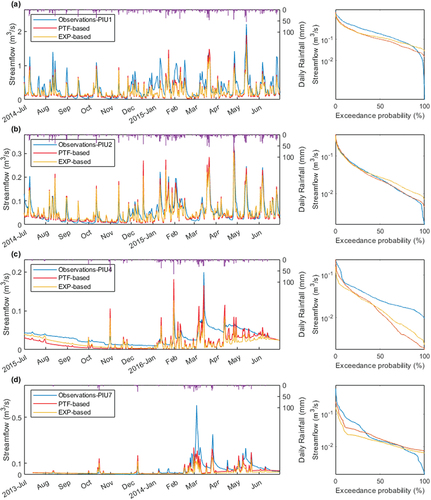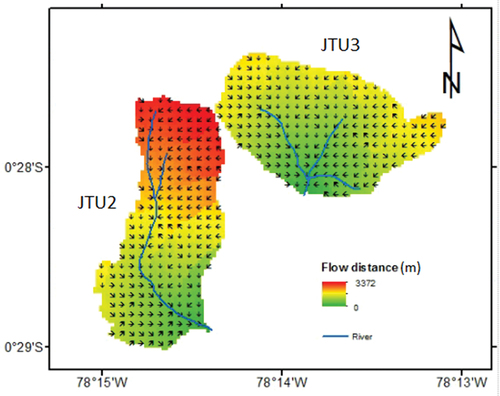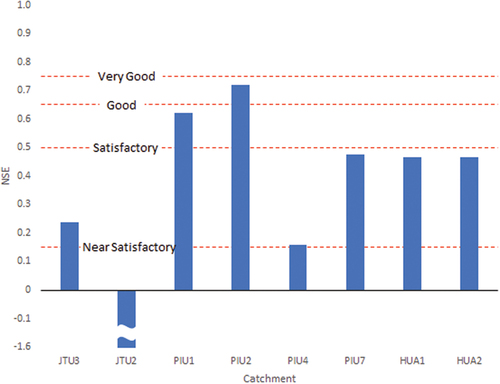Figures & data
Figure 1. The location of the iMHEA sites within the major land cover types of the tropical Andes. JTU: Jatunhuaycu; PIU: Piura; HUA: Huaraz.

Table 1. Description of the monitored catchments. BET-Tr: tropical broadleaf evergreen trees; C3: C3 grasses; C4: C4 grasses; ESH: evergreen shrubs; BS: bare soil. The codes JTU, PIU, and HUA refer to the locations shown in .
Table 2. Description of soil parameters, as sourced from Best et al. (Citation2011).
Table 3. Soil parameterization using pedotransfer functions. CL: clay fraction; SA: sand fraction; SI: silt fraction; DBD: dry bulk density (g cm−3); SOC: soil organic carbon (% weight); CEC: carbon exchange capacity (cmol kg−1); pH: hydrogen ion activity.
Table 4. Soil parameters used in this study’s JULES set-up.
Figure 2. Water retention curves obtained from PTF estimation (PIU, HUA, JTU) and in situ investigations in the JTU catchment (EXP)2013.

Figure 4. Left: a comparison of the observed and modelled flows of (a) JTU3, (b) JTU2, (c) HUA1, and (d) HUA2. Right: flow duration curves of the same hydrographs.

Figure 5. Left: a comparison of the observed and modelled flows of (a) PIU1, (b) PIU2, (c) PIU4, and (d) PIU7. Right: flow duration curves of the same hydrographs.

Table 5. Hydrological summary indices as calculated from the observed and modelled flow time series based on a daily time step in this study. OBS: observations; PTF: PTF-based set-up; EXP: EXP-based set-up; RR: rainfall–runoff ratio; BFI: baseflow index; R2FDC: slope of the flow duration curve; NSE: Nash-Sutcliffe efficiency. The codes JTU, PIU, and HUA refer to the locations shown in .


